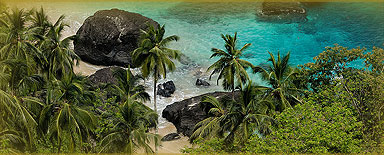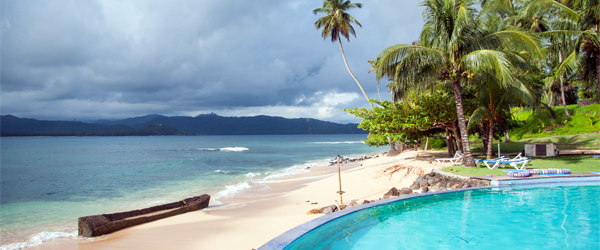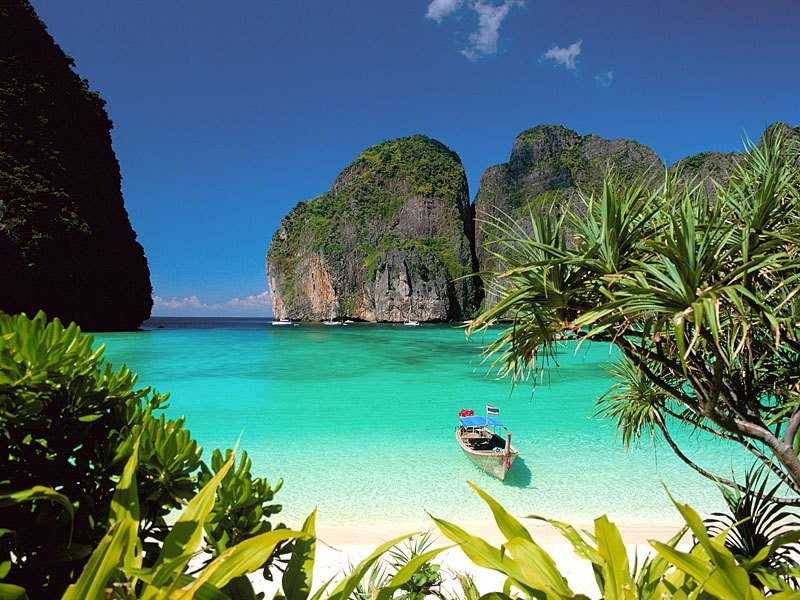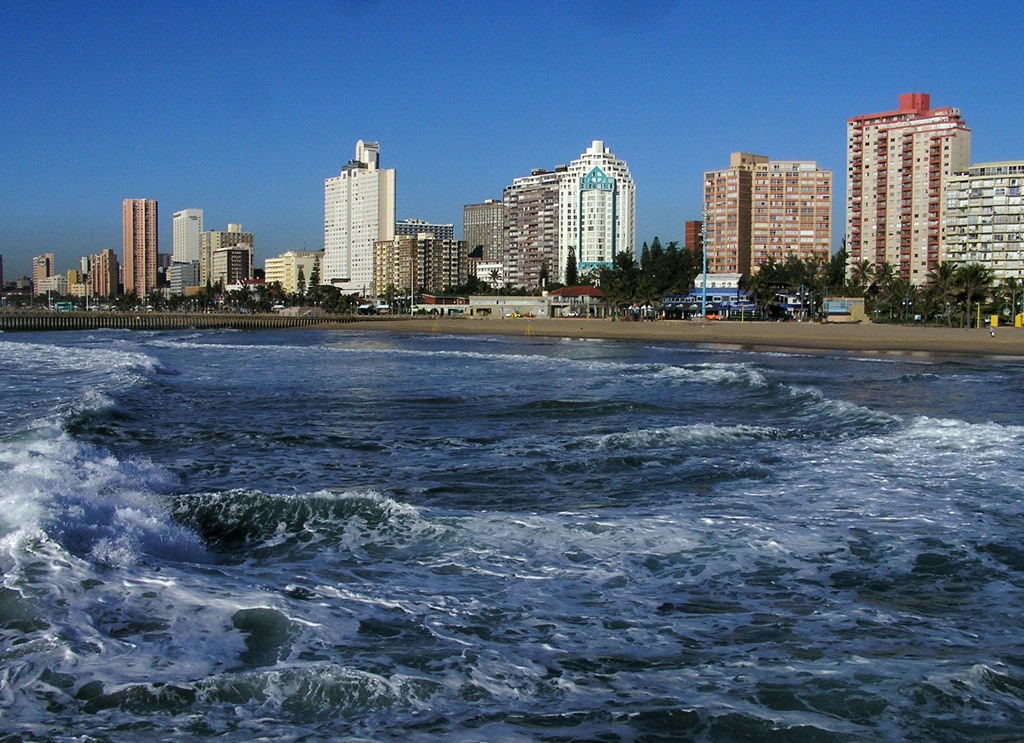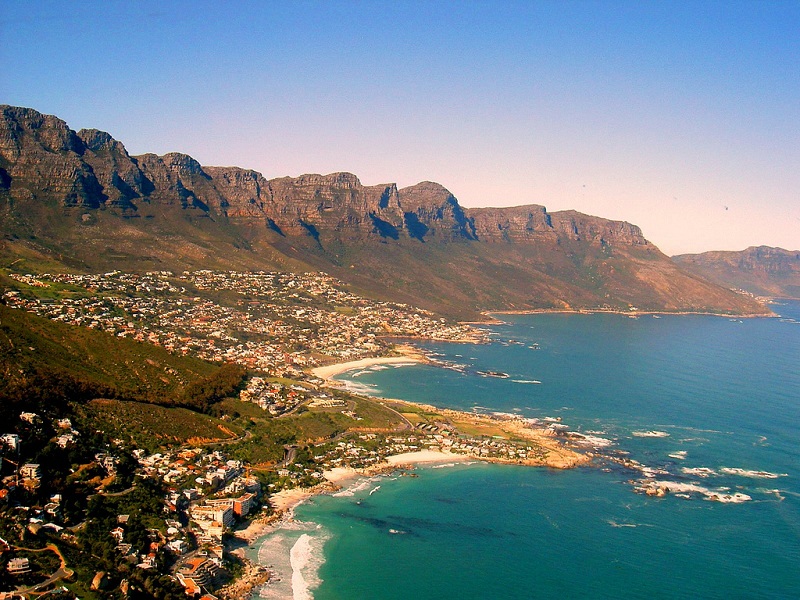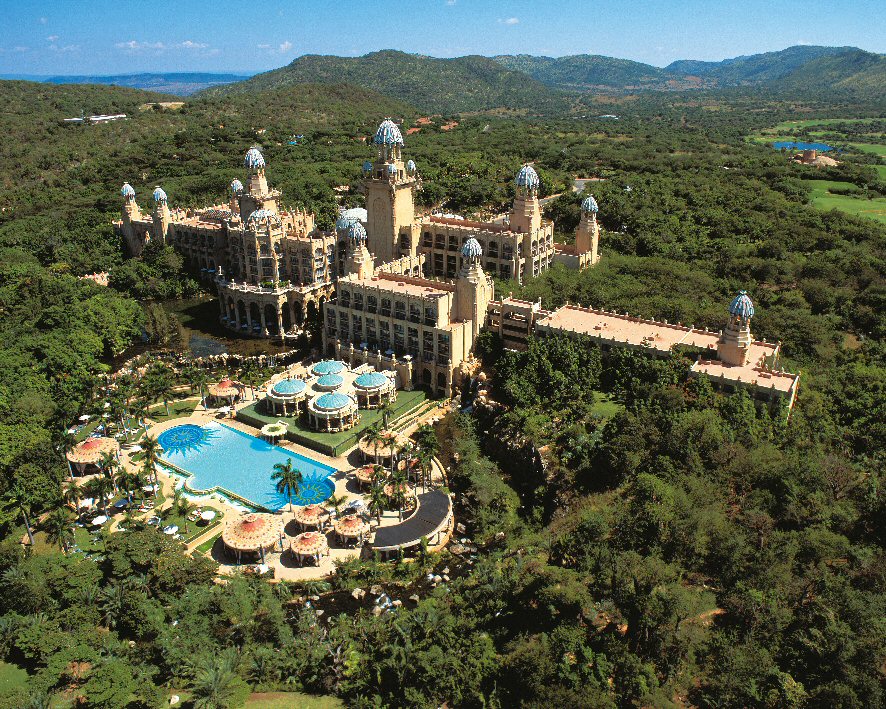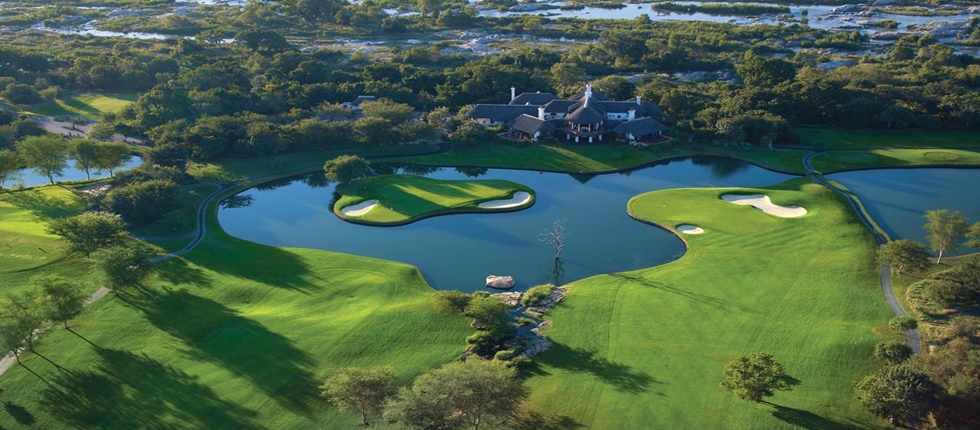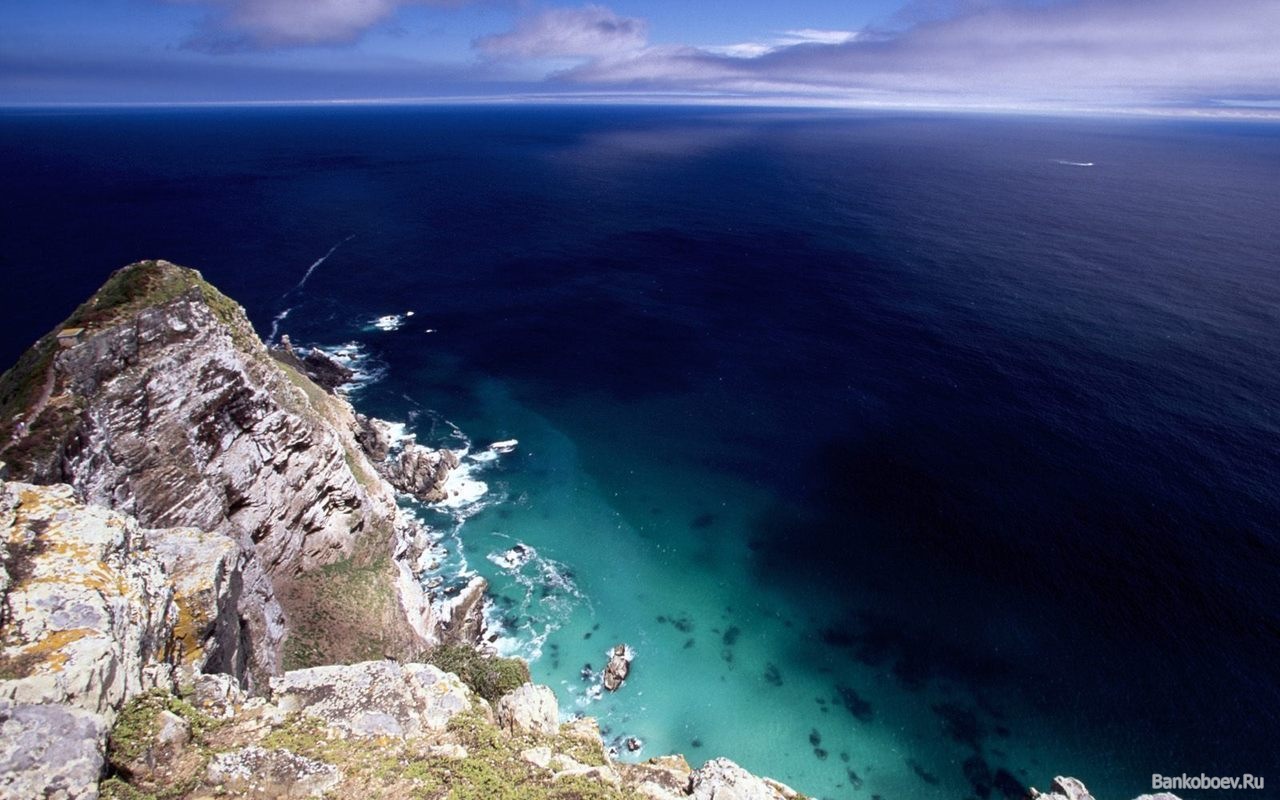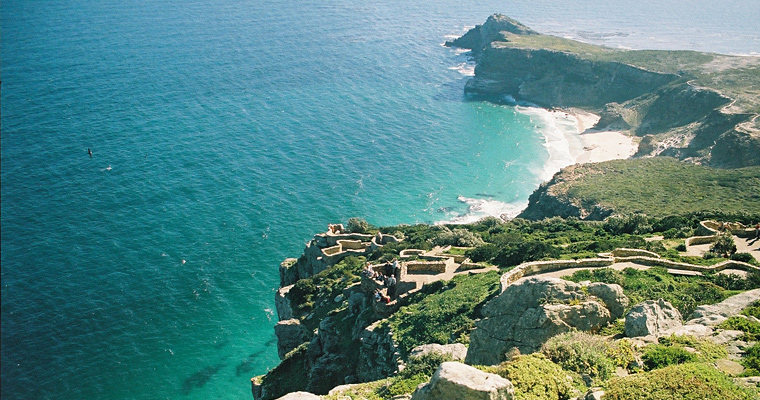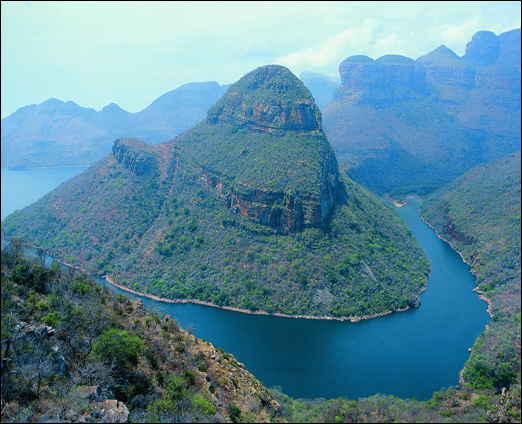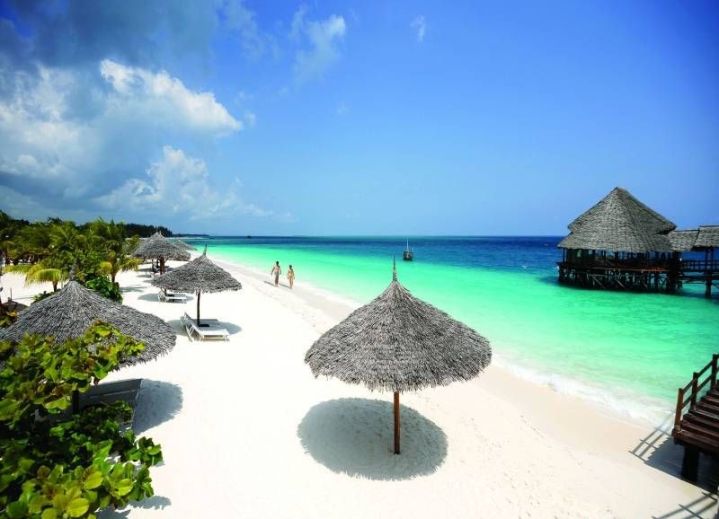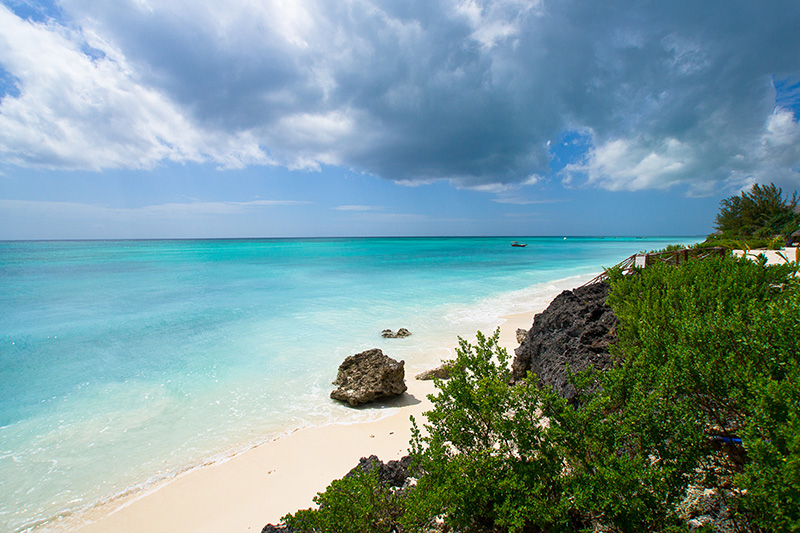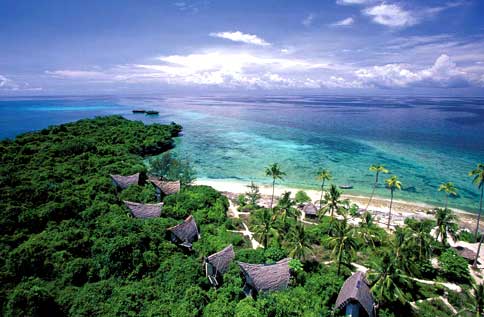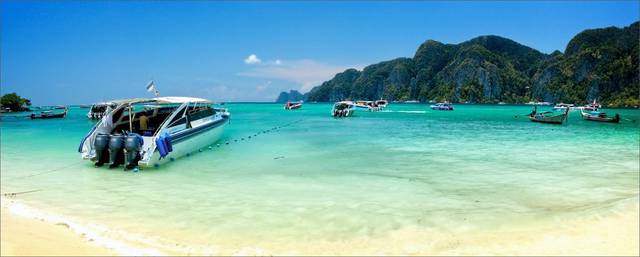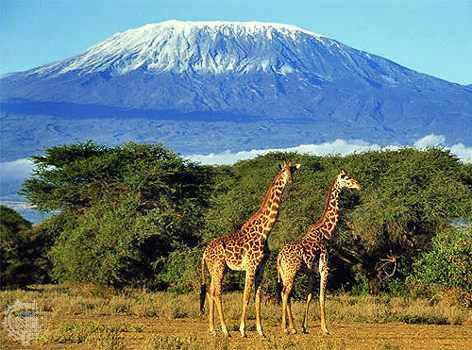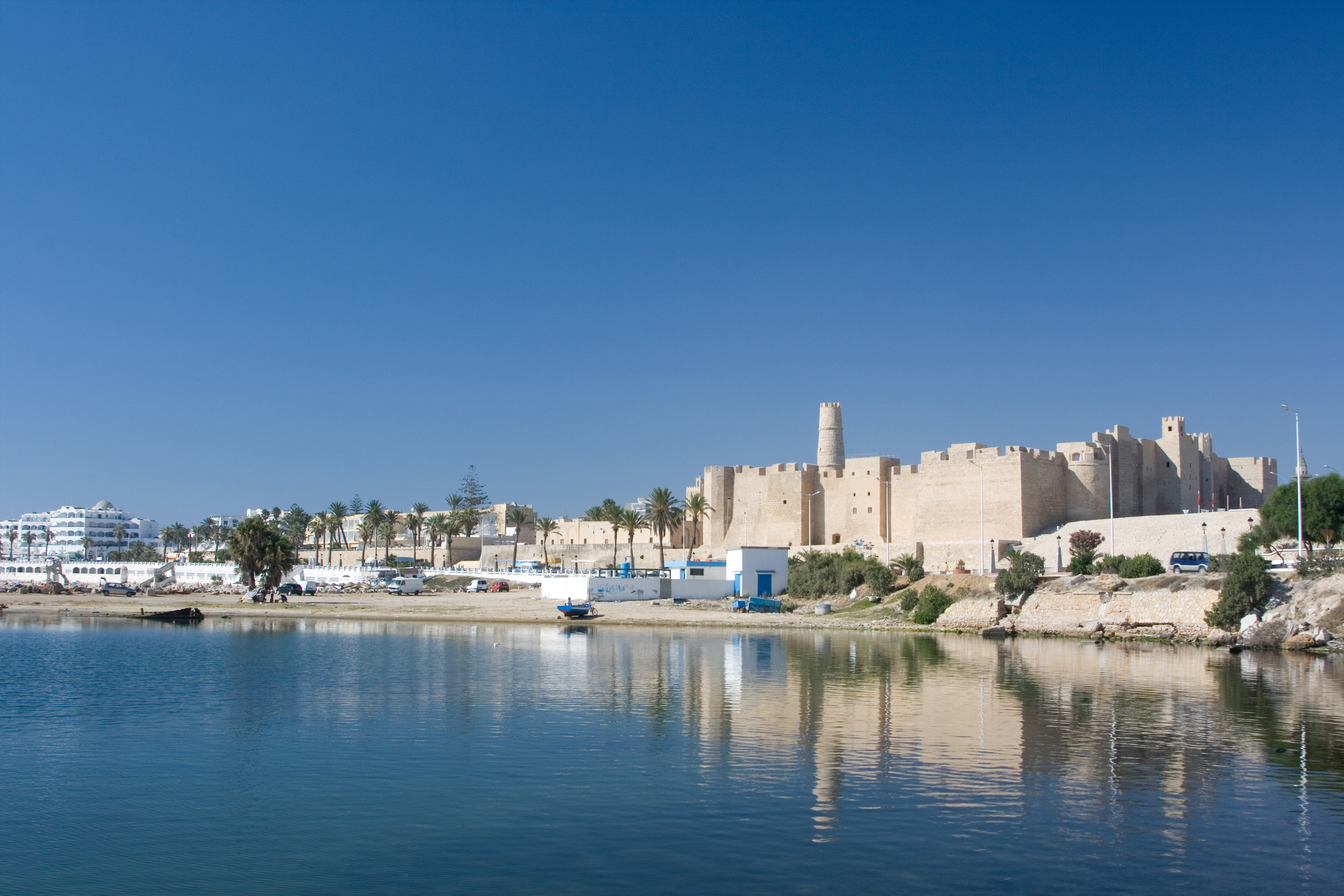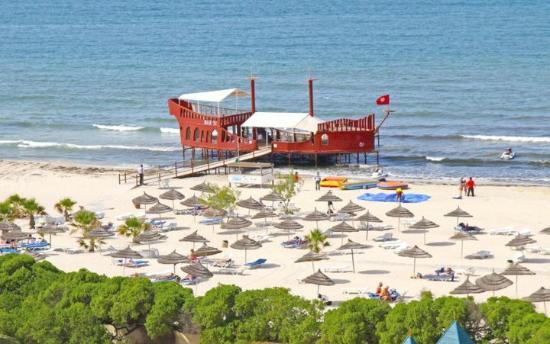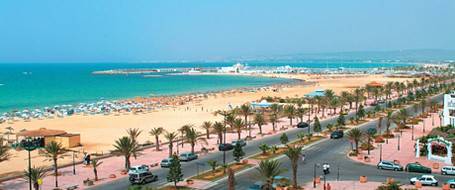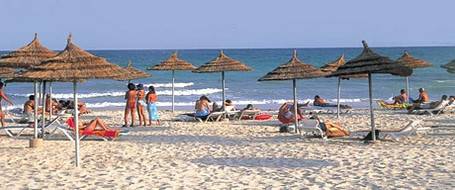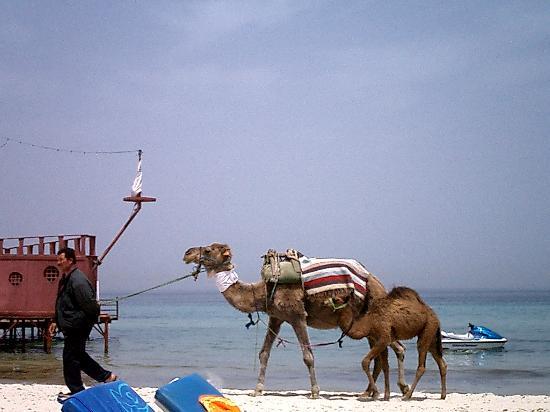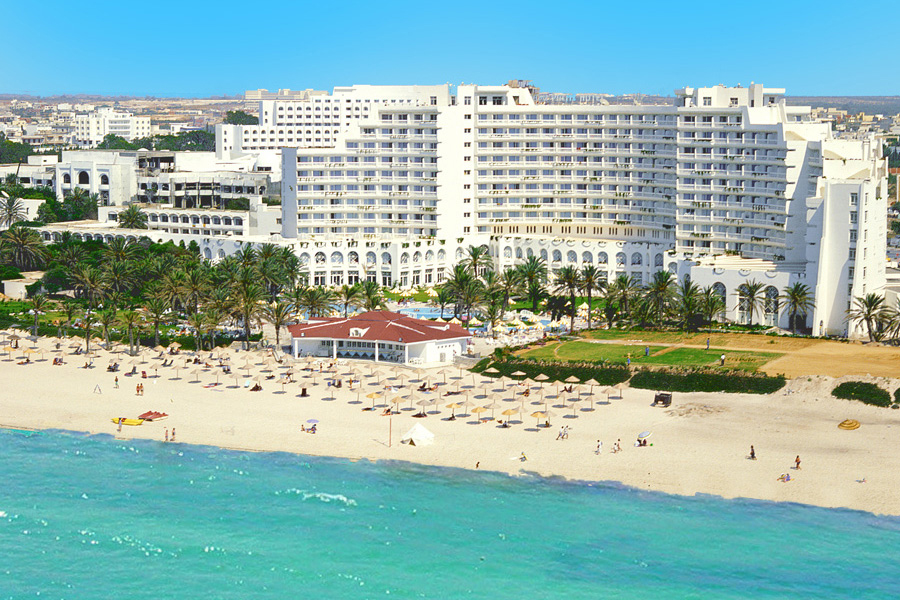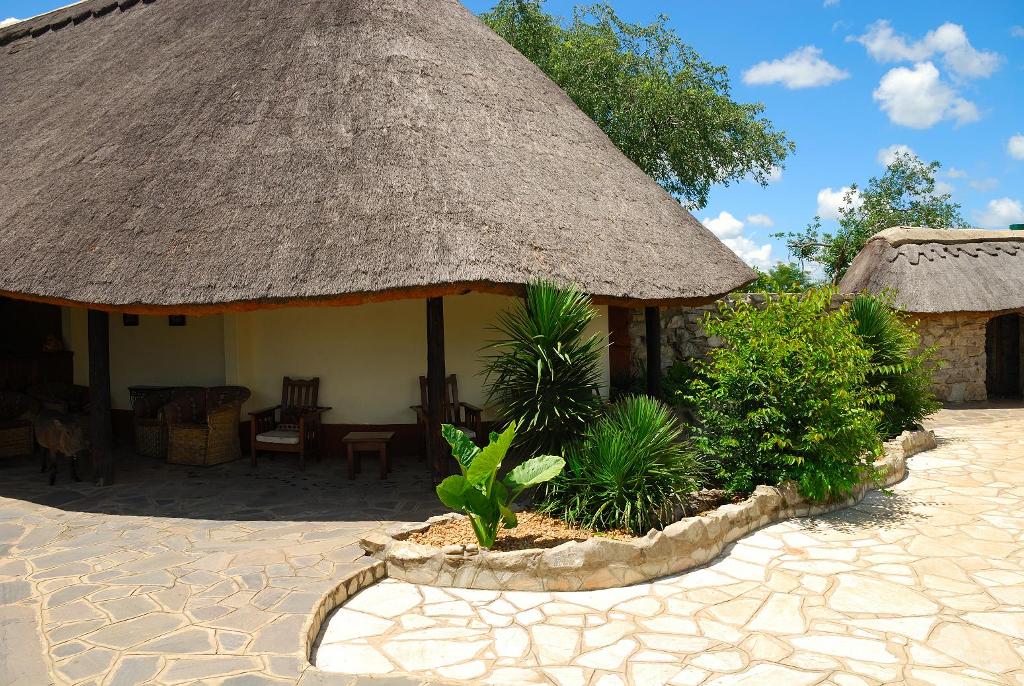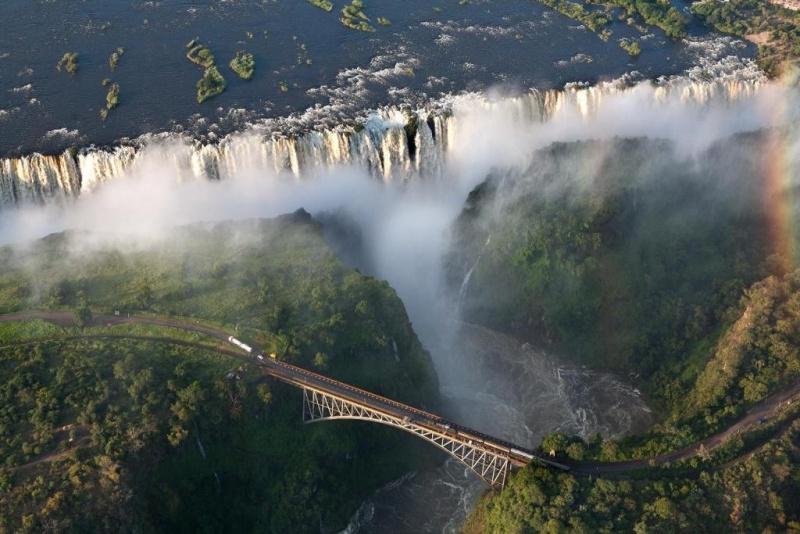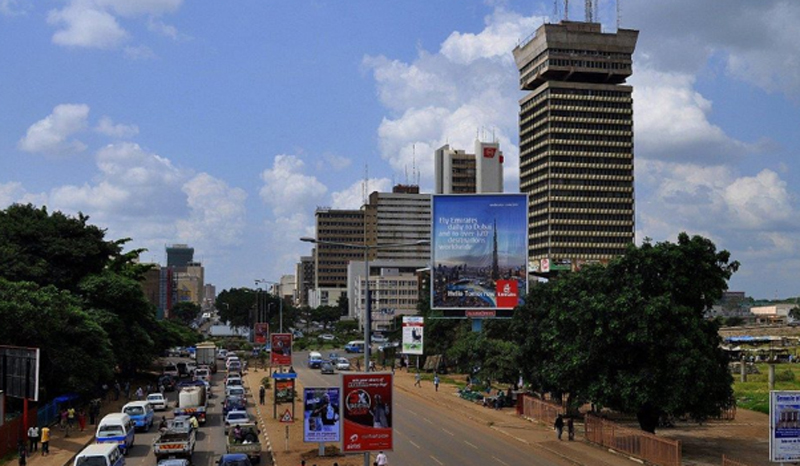Escape for the Weekend
Explore our collection of weekend
Sao Tome and Principe
What to see in Sao Tome and Principe? Obo National Park; Fort São Sebastião; Monte Café; Lagoa Azul; Sete Pedras; Bone de Joquei; Pedra Gale; and Jockey Cap Island.
The Democratic Republic of Sao Tome and Principe is an island country in Central Africa, located on the eponymous archipelago in the Gulf of Guinea, off the coast of Africa. The state consists of two islands of volcanic origin - Sao Tome and Principe, located at a distance of 140 km from each other, and six smaller islands. Sao Tome and Principe is the smallest Portuguese-speaking country in the world. The capital of the state is Sao Tome. The official language is Portuguese.
The national currency is the Dobra. You can exchange money at outdoor exchange stands in the capital city or at the hotel. Credit cards are accepted in big cities, but it is highly recommended to have enough cash with you.
The terrain of the country is rather mountainous, as the islands are a part of a chain of extinct volcanoes. The climate is tropical with high humidity and the average temperatures of around 27 degrees Celsius.
In Sao Tome and Principe you have an opportunity to enjoy the pristine nature, uncrowded beaches, abundant wildlife and relaxed pace of life.
In the city of Sao Tome you will see lush green parks and colorful colonial mansions, preserved quite well since Portuguese rule.
Nature lovers will undoubtedly like Obo National Park, where you can watch wild birds, see gorgeous orchids and a picturesque waterfall and climb Pico de Sao Tome, whose height is more than 2 thousand meters.
Those who are fond of history should visit Fort São Sebastião, which was built in 1575 and now is functioning as a national museum.
You will like tranquil and romantic beaches of Principe, offering lots of opportunities for swimming, snorkeling and diving; and beautiful plantations of Sao Tome and Principe, the atmosphere of which bring you to colonial times. One of the most popular plantations is Monte Café, where you can visit a coffee museum.
Airports
São Tomé International Airport (TMS) is the main international airport in São Tomé and Príncipe.
Diving in Sao Tome and Principe
This small island country has all the conditions for fascinating diving: perfect water visibility, abundant marine life, plenty of various corals and fancy volcanic formations.
Off Sao Tome you will find the following dive sites:
Lagoa Azul, suitable for all levels, where you will find picturesque underwater rocks and corals, teeming with butterfly fish, morays, red carps and soldier fish;
Diogo Vaz, where you can meet rock fish and large brown, yellow and red gorgons;
Sao Miguel – 2 islets, featuring rich fauna, which includes sharks and turtles;
Sete Pedras, a group of rocks with crystal-clear water, coral reef and large fish;
In Kia you will find lots of morays, rock fish, sharks and red carps.
The waters of Principe are also good for diving.
In Pedras Tinhosas you can dive near large vertical rocks accompanied by sand sharks, hammer sharks and king fish.
Bone de Joquei boasts steep walls and massive rocks inhabited by red carps and sand sharks.
Pedra Gale is said to be one of the best dive sites of Principe for its picturesque corals and great variety of marine species.
Near Jockey Cap Island you will meet barracudas, trigger fish, parrot fish and sometimes turtles.
South Africa
The Kruger National Park; amazing flora of Kirstenbosch National Botanical Garden; whales migration in Hermanus; waterfalls of Blyde River Canyon; Garden Route; kelp forests of Cape Town;
South Africa, officially named the Republic of South Africa, is a state in the southern part of the African continent, which has borders with Namibia, Botswana and Zimbabwe to the north and with Mozambique and Swaziland to the north-east. Within the territory of the Republic of South Africa there is an enclave state Lesotho. The territory comprises 1.2 million square kilometers; the population is 54 million people. South Africa has three capitals: Pretoria (the administrative capital), Cape Town (the legislative capital) and Bloemfontein (the judicial capital). There are 11 official languages, including English.
The climate varies from desert in the north-west to sub-tropical on the eastern coast. Most of the terrain is a plateau.
The national currency is the South African rand. You can exchange money at banks which work from 9am to 3pm on workdays or at exchange offices. ATMs are widely spread. In major cities you can also use your credit card, but in smaller towns it is better to have enough cash. About a million of tourists come to South Africa every year. And this big, diverse and amazingly beautiful country has a lot to suggest them: paradise beaches, majestic mountains, abundant wildlife and incredible 2,500 km of coastline. South Africa is also well-known for gold and diamonds.Nature enthusiasts are attracted by the Kruger National Park – the largest and most famous nature reserve in South Africa, where you can see elephants, buffalos, lions and leopards and even track a rhino on foot. In Kirstenbosch National Botanical Garden you can admire beautiful local plants and flowers; from June to September in Hermanus you can see migrating whales coming close to the shore; in Blyde River Canyon you will find breathtaking waterfalls, Pilgrim's Rest, a gold-mining town founded in 1873, the impressive Bourke's Luck Potholes; elephants can be easily met in Addo Elephant National Park. Have you ever heard of African penguins? You have a chance to see them on Boulders Beach, near Cape Town.
Those who are fond of outdoor activities will be glad to drive the famous Garden Route, winding from Mossel Bay to Storms River by plentiful lakes and picturesque coastal towns. Jeffrey's Bay, located near Port Elizabeth, is said to be a perfect place for surfing. Mountain-climbers and hikers will like Table Mountain from the top of which you can see really stunning panoramas, and the Drakensberg, featuring the highest peaks in South Africa and gorgeous waterfalls.
Connoisseurs of history should not miss the chance to visit Anglo-Boer War Battlefields, the Apartheid Museum, situated in Johannesburg and Robben Island, where Nelson Mandela was imprisoned during 18 years.
Another good way to get acquainted with South Africa is exploring its Winelands, where you can enjoy wine tastings, perfect cuisine and splendid views.
Airports
Bram Fischer International Airport (BFN), Bloemfontein
Cape Town International Airport (CPT), Cape Town
King Shaka International Airport (DUR), Durban
O. R. Tambo International Airport (JNB) the main international airport of South Africa, located near Johannesburg.
Port Elizabeth International Airport (PLZ), Port Elizabeth
Diving in South Africa
South Africa is one of the most popular diving destinations in the world. It offers the underwater treasures of two oceans - the Atlantic and the Indian. Here you will find colorful tropical reefs, interesting shipwrecks, rare marine critters and excellent diving conditions - warm climate, crystal clear water and well-developed infrastructure.
Close to Cape Town you can enjoy colourful reef walls, caves and massive kelp forests. From April to September there is a chance to dive with white sharks.
On the way to Cape Point Nature Reserve there is the False Bay, the largest bay in South Africa. Its underwater rocky terrain features the steep cliffs in the western part and sandy bottoms in the eastern. Among the marine inhabitants you can meet pyjama sharks, puffadder shysharks and leopard catsharks. Those who like wreck diving will be glad to explore the SS Lusitania, a 5-thousand-ton twin-screw liner, built in 1906 and sunk 1911; and the HMS Thames, a river-class cruiser sunk in 1947 and lying at a depth of 47-54 meters.
In Mabibi, located in the north-eastern part of KwaZulu-Natal, you will find lots of of soft and hard corals, interesting underwater sceneries, and various fish species. From October to February you can meet here migrating whale sharks and whales.
Aliwal Shoal Marine Protected Area features ragged-tooth sharks, tiger sharks and black-tip sharks.
Tanzania
What to see in Tanzania?Mount Kilimanjaro; Maasai in Ngorongoro Conservation area; the Stone Town of Zanzibar;bullfighting on Pemba Island; coral gardens of Mnemba Island; the Mafia Island Marine Park; reefs of the Songo Songo Archipelago.
Tanzania, the official name is the United Republic of Tanzania, is a state in East Africa, bordered by Kenya and Uganda In the north, by Rwanda, Burundi and the Democratic Republic of the Congo to the west, and by Zambia, Malawi and Mozambique to the south . The eastern boundary of the country is the Indian Ocean. Tanzania covers 947 thousand square kilometers; the population is more than 47 million people. The capital is Dodoma. The official languages are Swahili and English.
The national currency is the Tanzanian shilling. Money can be exchanged at most banks and bureaux de change. ATMs can be found in most cities and towns. Major credit cards are widely used.
Tanzania’s terrain consists of the coastal plains, the Masai Steppe in the north, and the Southern Highlands, a high plateau known in the south. Due to the large size of the country, the climate varies a lot. The main rainy season continues from March to the end of May, while the dry season lasts from June to October.The nature of Tanzania is truly colorful and exotic: it boasts vast national parks (Kilimanjaro, Serengeti, Tarangire, Ruaha), amazing wildlife, majestic volcanoes and the ocean with tranquil sandy beaches and rich marine life.
Those who come to Africa in search of classic safari should visit the Serengeti National Park whose vast grasslands are inhabited by lions, wildebeests and zebras. The park can be also viewed from a hot-air balloon. In the nearby Ngorongoro Conservation area you can meet the rare black rhino and see the traditional life of the Maasai. In the Mahale Mountains you will find curious chimps, red colobuses and yellow baboons. Tarangire National Park with its majestic huge baobabs is a perfect place for bird watching and walking safaris. The Ruaha National Park, situated in the center of the country, features abundant fauna, which includes wild dogs, jackals, lions, impala, leopards, zebras, elephants, giraffes and cheetahs.
In Mount Kilimanjaro National Park you can admire this great snow-capped mountain – the highest peak in Africa – from a distance or even climb it. Its slopes are covered with rainforest and inhabited by various wild animals.
Many people are attracted by paradise beaches and turquoise waters of Zanzibar
Those who want to relax in a tranquil uncrowded place will like Mafia Island, where you can not only enjoy diving, snorkeling and lying on a beach, but also can get acquainted with traditional Swahili culture.
Pemba Island with its high visibility, coral gardens and rich marine fauna offers great opportunities for diving. Moreover from December to February you can watch traditional bullfighting – the heritage of Portuguese dominance.
Connoisseurs of history will be glad to visit the Stone Town of Zanzibar, which has been nearly intact during the last two centuries.
Airports
Julius Nyerere International Airport (JNIA) (DAR), the main airport located near Dar es Salaam, Tanzania’s largest city.
Kilimanjaro International Airport (KIA) (JRO) serves Arusha and Moshi.
Abeid Amani Karume International Airport (ZNZ) the main airport, serving the Zanzibar Archipelago.
Diving in Tanzania
Zanzibar offers several perfect dive sites, the most popular of which are Mnemba Island, a small atoll with amazing coral gardens, and Kizimkazi Reef.
Off Pemba Island you will find good opportunities for drift diving due to the strong oceanic current and will see plenty of large fish never stops flowing.
From November to January in the Mafia Island Marine Park you can dive with whale sharks. In the waters of the Mafia archipelago it is possible to meet endangered species: for example, green and leatherback turtles and sea cows. Here you will also find here rock walls, fringing reefs, lots of soft corals and algae and about 400 fish species.
The Songo Songo Archipelago is famous for picturesque reefs and little amount of visitors.
Tunisia
What to see in Tunisia? El Djem; Kairouan; the ruins of Carthage; Chott el Djerid; the Grand Erg Oriental; the Mountain Oasis; the 500-meter Tunnels Reef; Cap Bon; wrecks of the Algaz and the Takrouna.
Tunisia, the complete official name is the Republic of Tunisia, is a country in North Africa. The population comprises more than 10 million people; the total area is nearly 165 square kilometers. The capital of the country is Tunis. The official language is Arabic. In the north and east Tunisia is washed by the Mediterranean Sea, and borders Algeria to the west and Libya to the south-east.
About a third of the country is located in the eastern foothills of the Atlas Mountains; the rest of the area is covered with savannas and mostly deserted. The climate is Mediterranean in the northern part and semiarid in the south.
The national currency is the Tunisian dinar. Credit cards are accepted at major hotels, shops and restaurants. ATMs are widely spread. Foreign currency can be exchanged at banks, bureau de exchanges, and post offices.
Beside the wonderful sandy beaches, excellent hotels and thalassotherapy and spa centers, Tunisia attracts tourists from all over the world by its own unique attractions. It is an original eastern country with a rich history and interesting culture.
History enthusiasts will be glad to visit El Djem, where you can still see the remains of Roman amphitheatre; Bulla Regia, with its unique underground villas; Kairouan, featuring plenty of beautiful mosques, tombs and madrassas; Monastir Ribat, a coastal fort in the past and a popular tourist attraction nowadays; and the ruins of Carthage, an ancient Phoenician city. In the Bardo Museum you can see gorgeous mosaic and other works of ancient world art.
Nature lovers will be undoubtedly captivated by lunar landscapes and mirages of Chott el Djerid, a salt pan, situated near Tozeur; by surreal dunes of the Grand Erg Oriental which can be admired from a camelback; and by picturesque streams, palm trees and waterfalls of the Mountain Oasis.
Relax on Djerba’s pristine beaches; go along whitewashed alleyways of Sidi Bou Said; and explore the old district of Sousse's Medina and buy some local craft works it its charming souk.
Airports
Djerba–Zarzis International Airport (DJE) situated on Djerba Island
Enfidha-Hammamet International Airport (NBE), Enfidha
Monastir Habib Bourguiba International Airport (MIR) serves Monastir
Sfax–Thyna International Airport (SFA) located near Sfax
Tozeur–Nefta International Airport (TOE), Tozeur
Tunis–Carthage Airport (TUN) serves Tunis
Diving in Tunisia
Colourful coral reefs, long coastline and numerous coves and bays make Tunisia very popular among divers from all over the world.
Perfect diving is awaiting you in Tabarka, where you will find the 500-meter Tunnels Reef with about 20 tunnels.
In Cap Bon, situated on the northern coast, you will find steep rocks, deep waters and great visibility. The underwater fauna boasts many Mediterranean species: groupers, gorgonians, morays, mullets and octopuses.
Off Hammamet there are a few interesting wrecks, including Italian and German vessels from WW2, for example The Algaz wreck, located at a depth of 65m, and the Takrouna, a WW2 German destroyer, still containing most of her ammunition.
Off Monastir you can go wall diving and meet various underwater critters, such as congers, moray eels, and dentex fish.
Zambia
It will be also interesting to see the cities – Lusaka, Ndola, Kitwe, Livingstone and others, as Zambia is the most urbanized African country, and its cities are actively developing.
Zambia, the complete official form is the Republic of Zambia, is a landlocked country in South Africa. It shares borders with the Democratic Republic of the Congo to the north, Tanzania to the north-east, Malawi to the east, Mozambique, Zimbabwe, Botswana and Namibia to the south, Angola to the west. The total area of the country is almost 753 thousand square kilometers; the population is more than 14 million people. The country's capital and largest city is Lusaka. The official language is English.
The climate of the country is tropical. The terrain of Zambia mostly consists of plateaus with a few hills, mountains, and river valleys.
The national currency is the Zambian kwacha. Money can be exchanged at banks and bureaux de change. The majority of hotels, restaurants, and the bigger shops accept credit cards. ATMs are available within all major cities and towns. Zambia is one of the most beautiful, diverse and friendly African countries. Its amazing nature and eclectic culture attract many tourists from all over the world.
Some of the tourists come to visit the famous Zambia’s national parks, covering a third of its territory: South Luangwa, Lower Zambezi and Kafue, where you can see abundant wildlife: lions, rhinos, elephants and giraffes. In Kasanka National Park you can become a witness of an impressive event – bats migration in November and December.
Some are longing to see the Victoria Falls, the largest waterfall on the Earth. You can not only watch this natural wonder but also go whitewater rafting, river boarding and abseiling.
While Canoeing Zambezi River you can meet crocs, elephants and hippos, and enjoy gorgeous wild landscapes.
In Zambia you can also take part in walking safari or bush camping and get an experience you will never forget.
Zambia boasts the longest fresh-water lake in the world (and the second deepest!) – Tanganyika Lake. It is inhabited by 350 species of fish, the majority of which are endemic.
Another lake, Kariba Lake, is often called Zambia’s French Riviera. Here you will find spectacular views, perfect fishing and boating opportunities, as well as gorgeous beaches.
It will be also interesting to see the cities – Lusaka, Ndola, Kitwe, Livingstone and others, as Zambia is the most urbanized African country, and its cities are actively developing.
Harry Mwanga Nkumbula International Airport (LVI), situated near Livingstone.
Kenneth Kaunda International Airport (LUN), located in Lusaka.
Simon Mwansa Kapwepwe International Airport (NLA) located in the city of Ndola.
As Zambia has no outlet to the sea, the only diving possible here is fresh-water diving in the lakes.
In 800-meter-long Lake Kashiba you will find great biodiversity and crystal-clear water. On the sides the depth of the lake comprises 100 meters, but no one knows how deep it is in the center, which makes it a diving challenge.
Lake Tanganyika offers great variety of fish species, perfect water visibility, big underwater outcrops and steep drop-offs.
